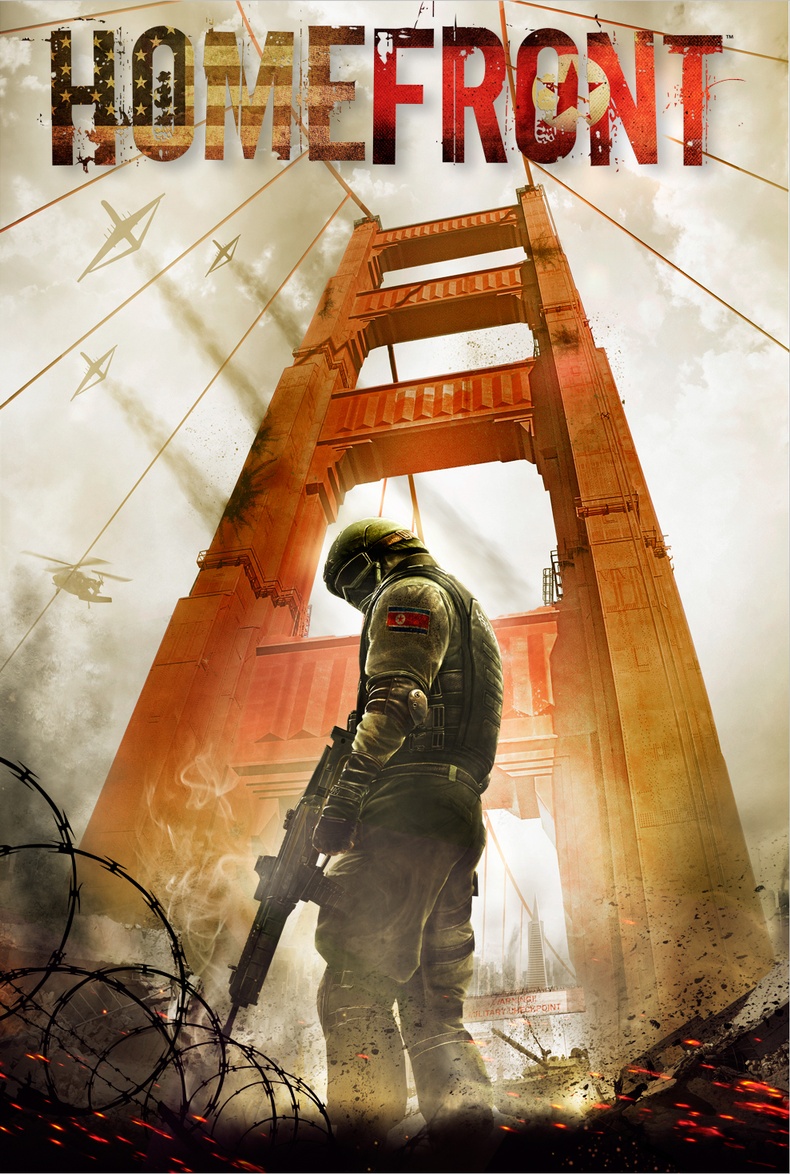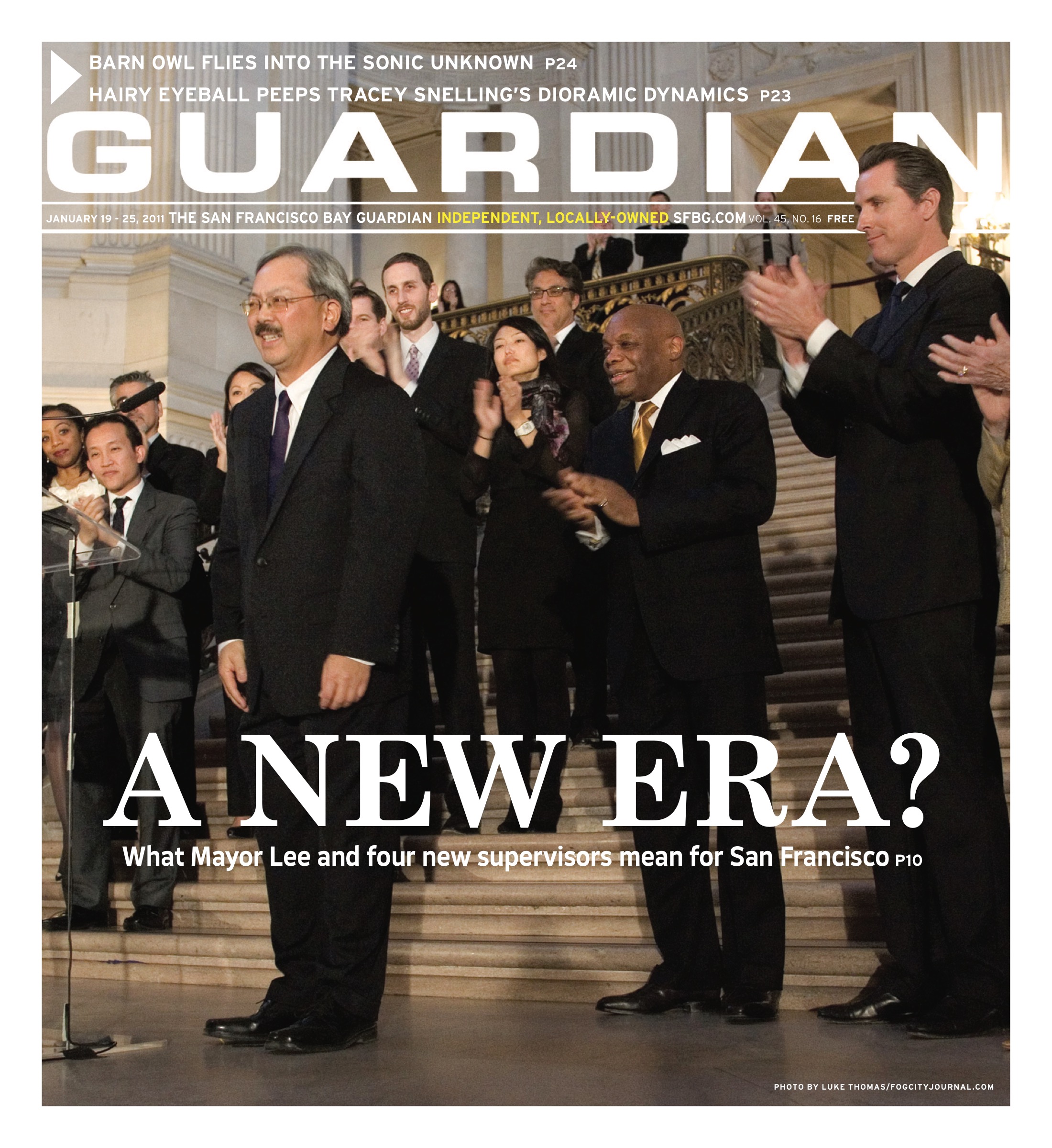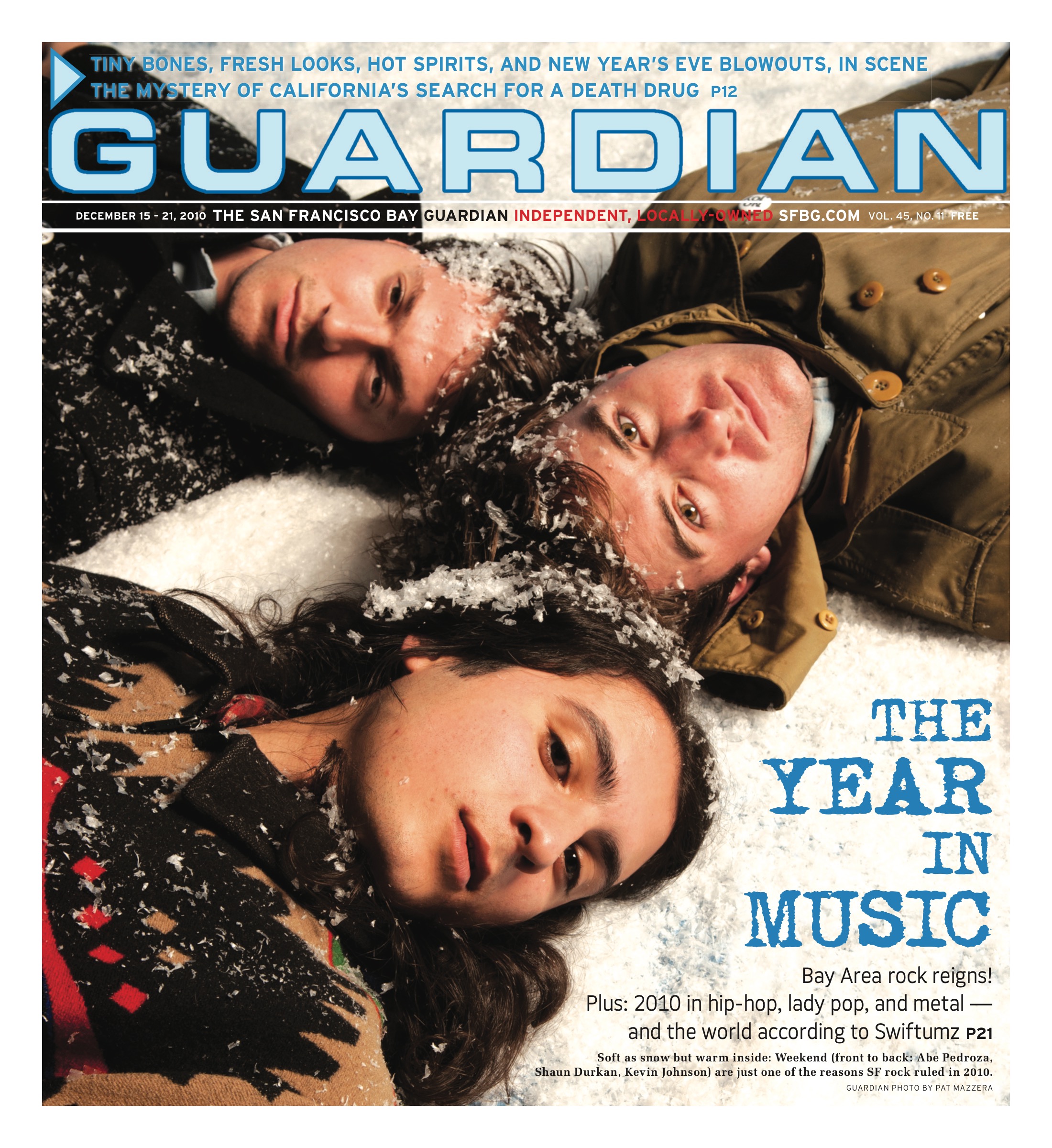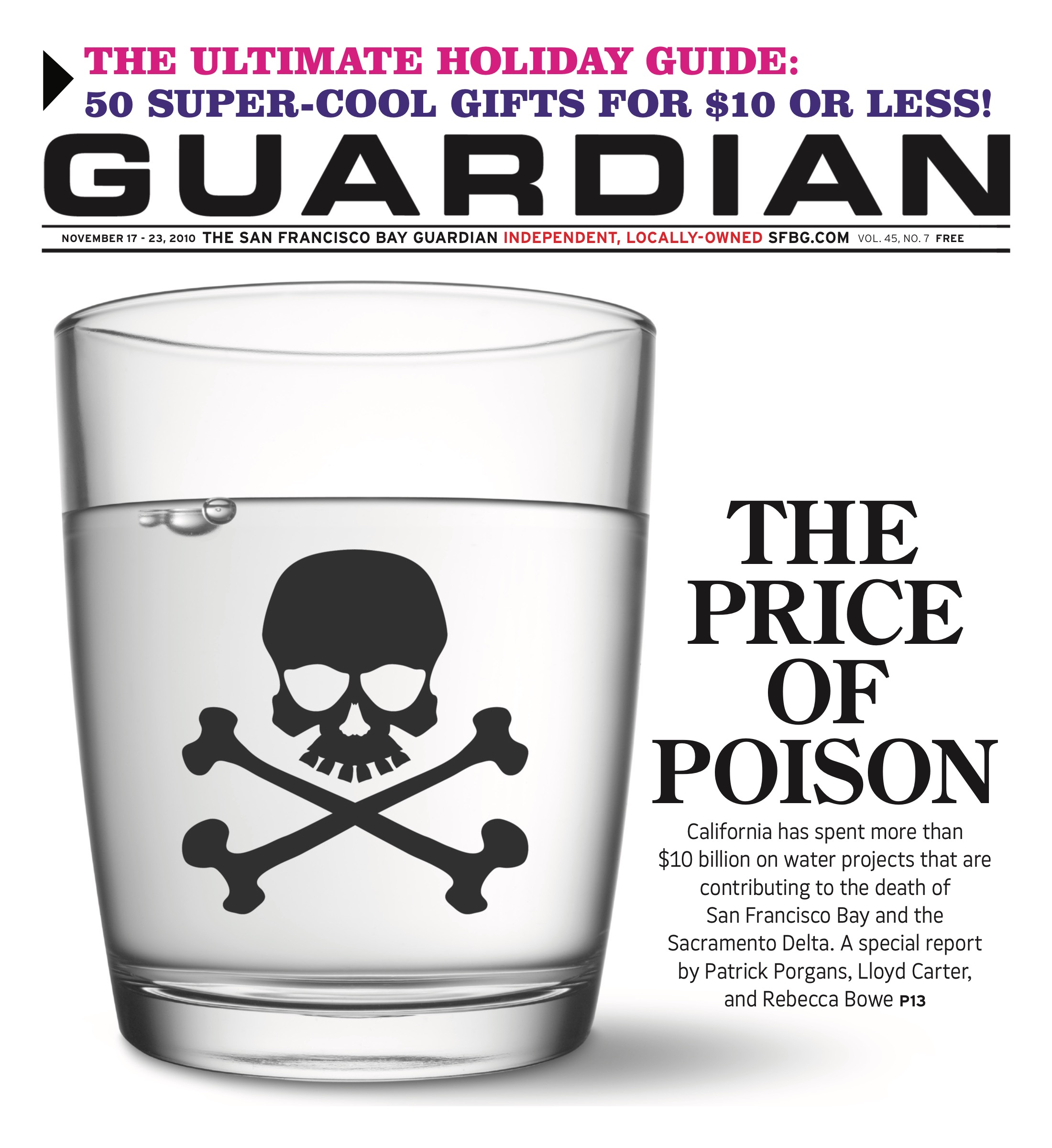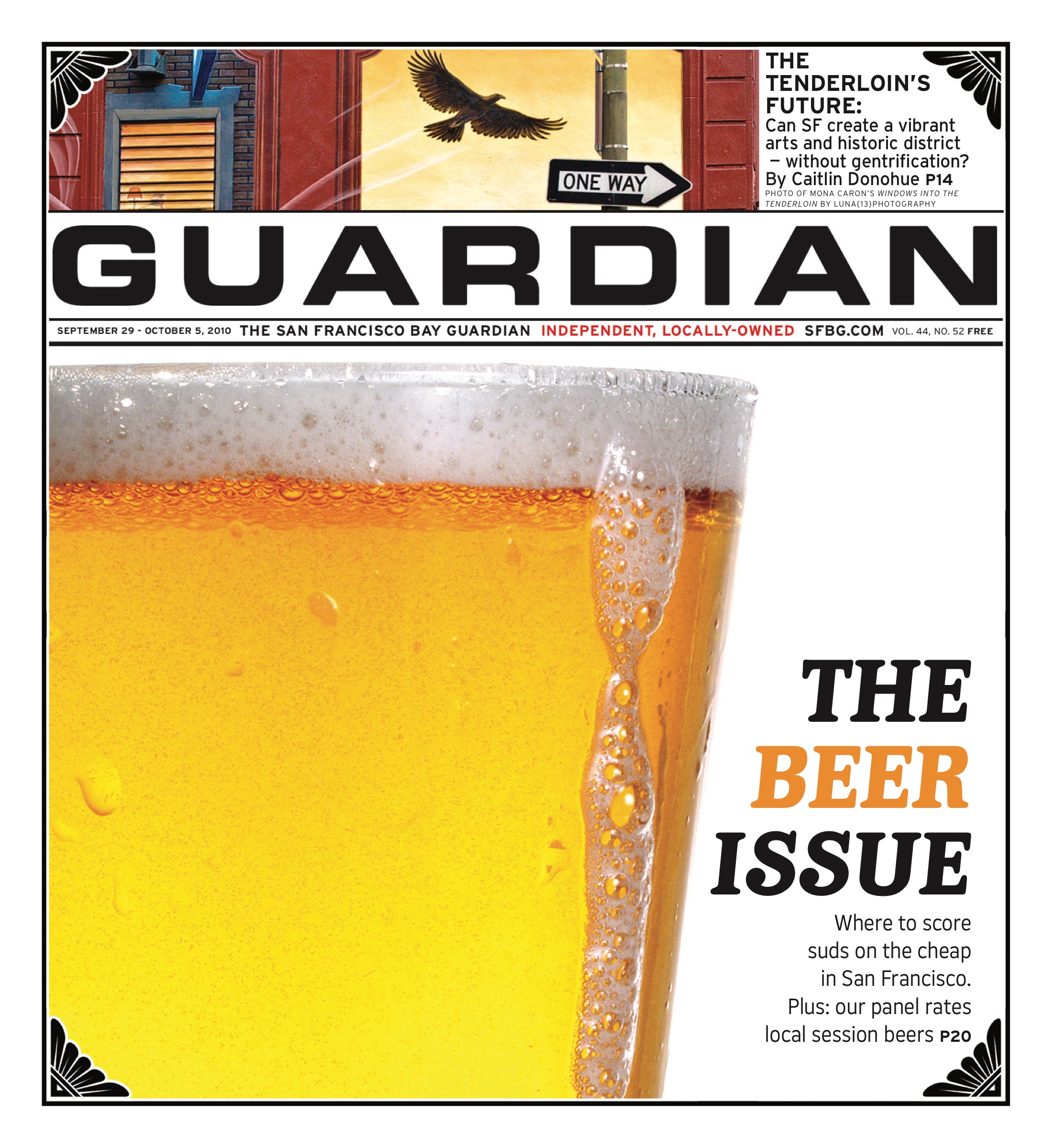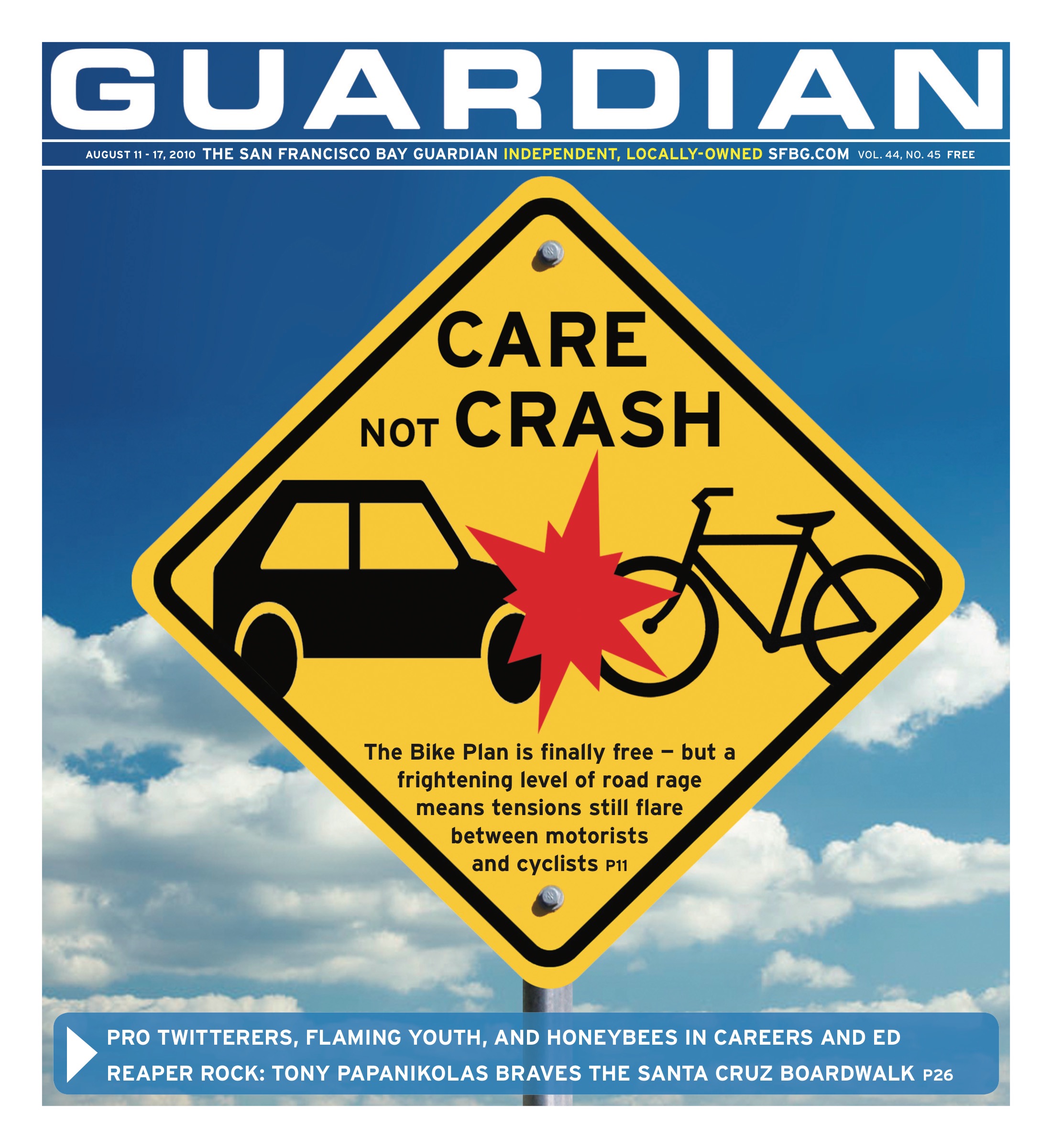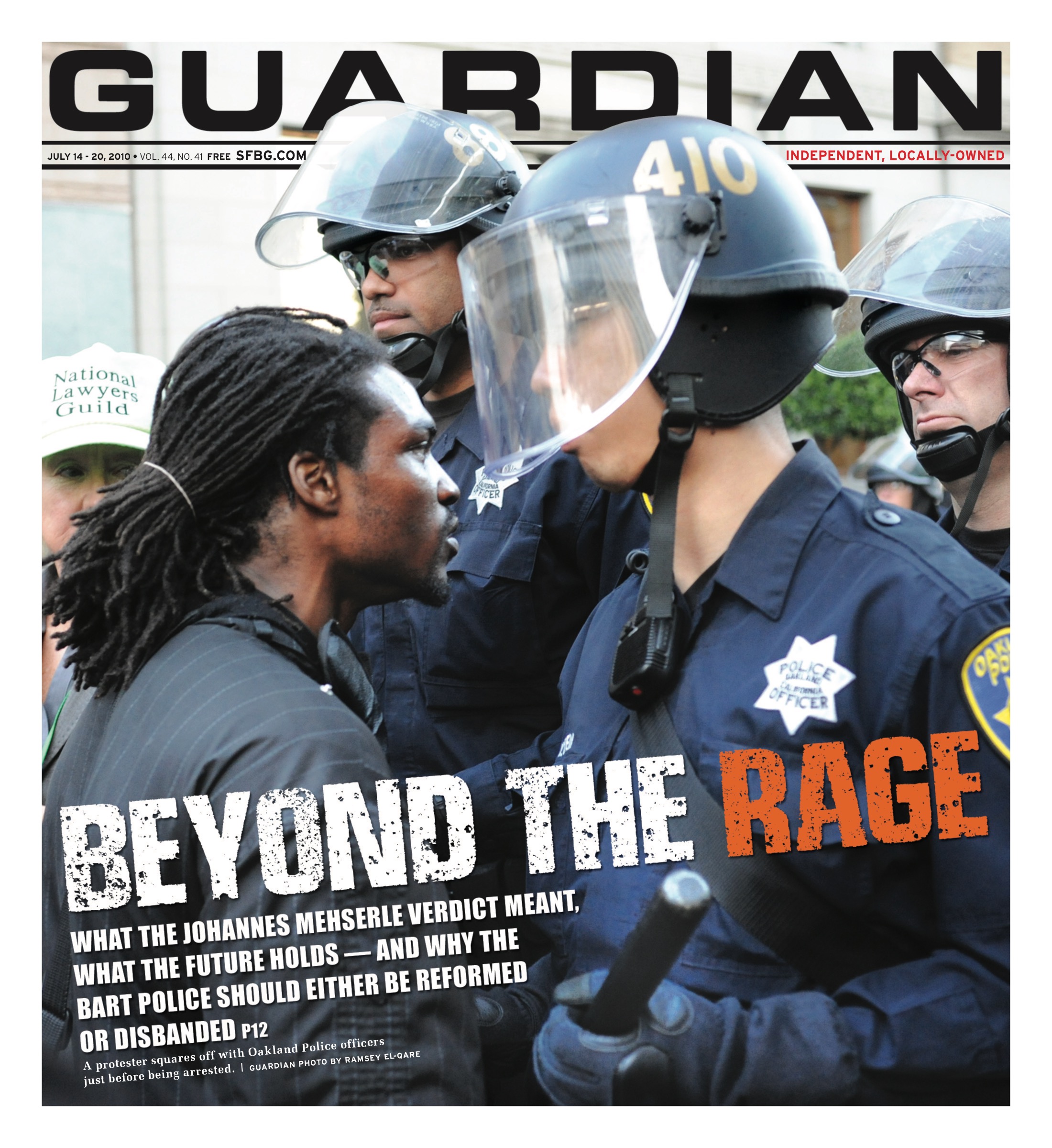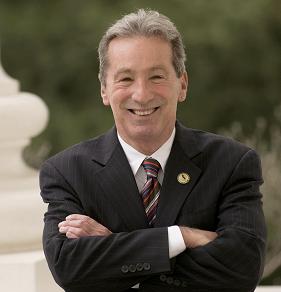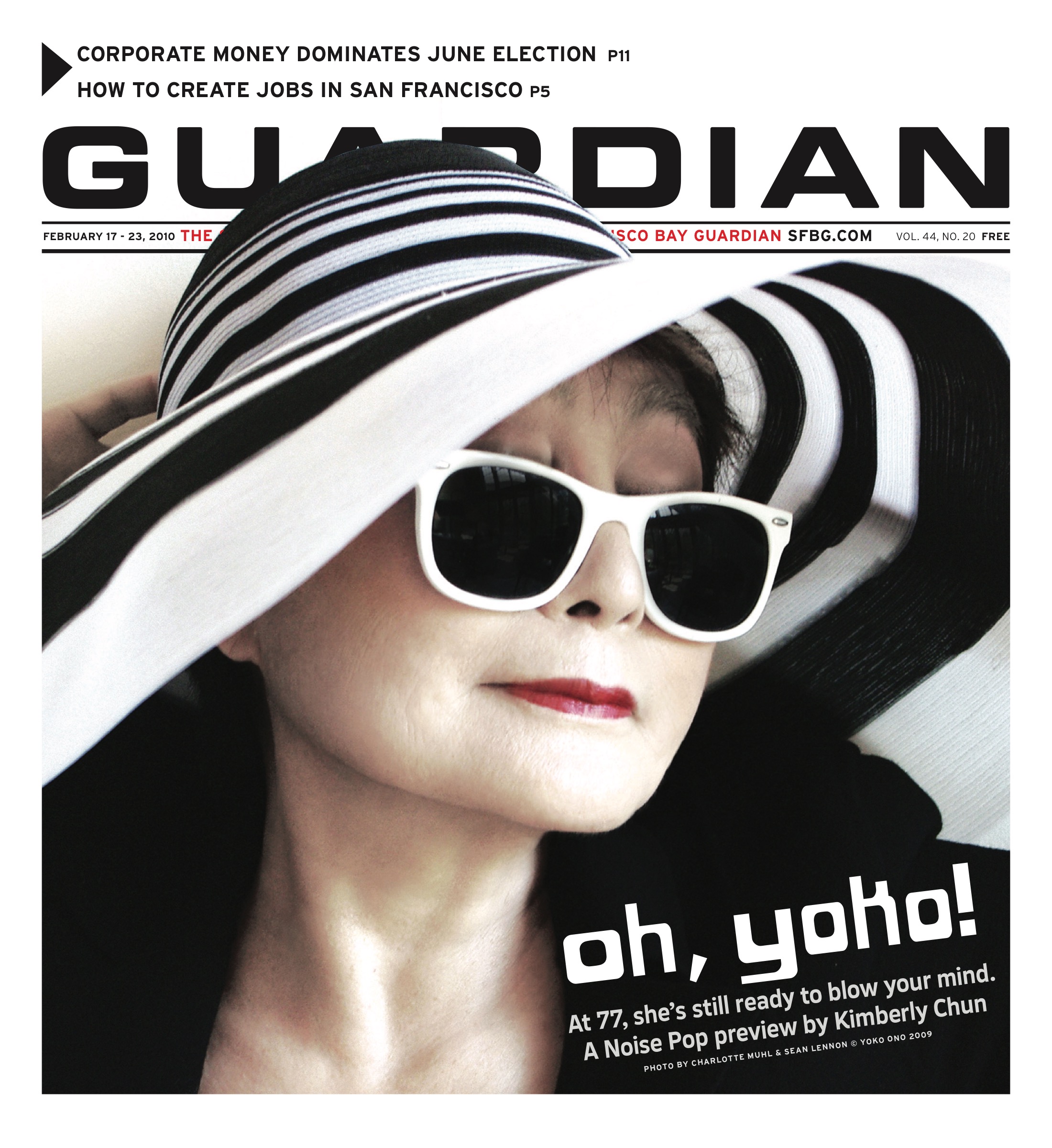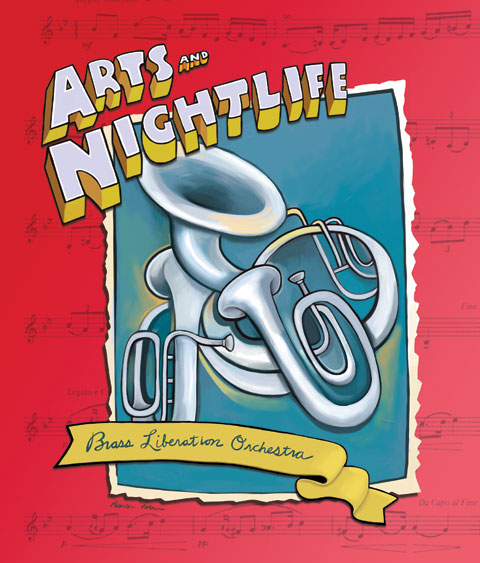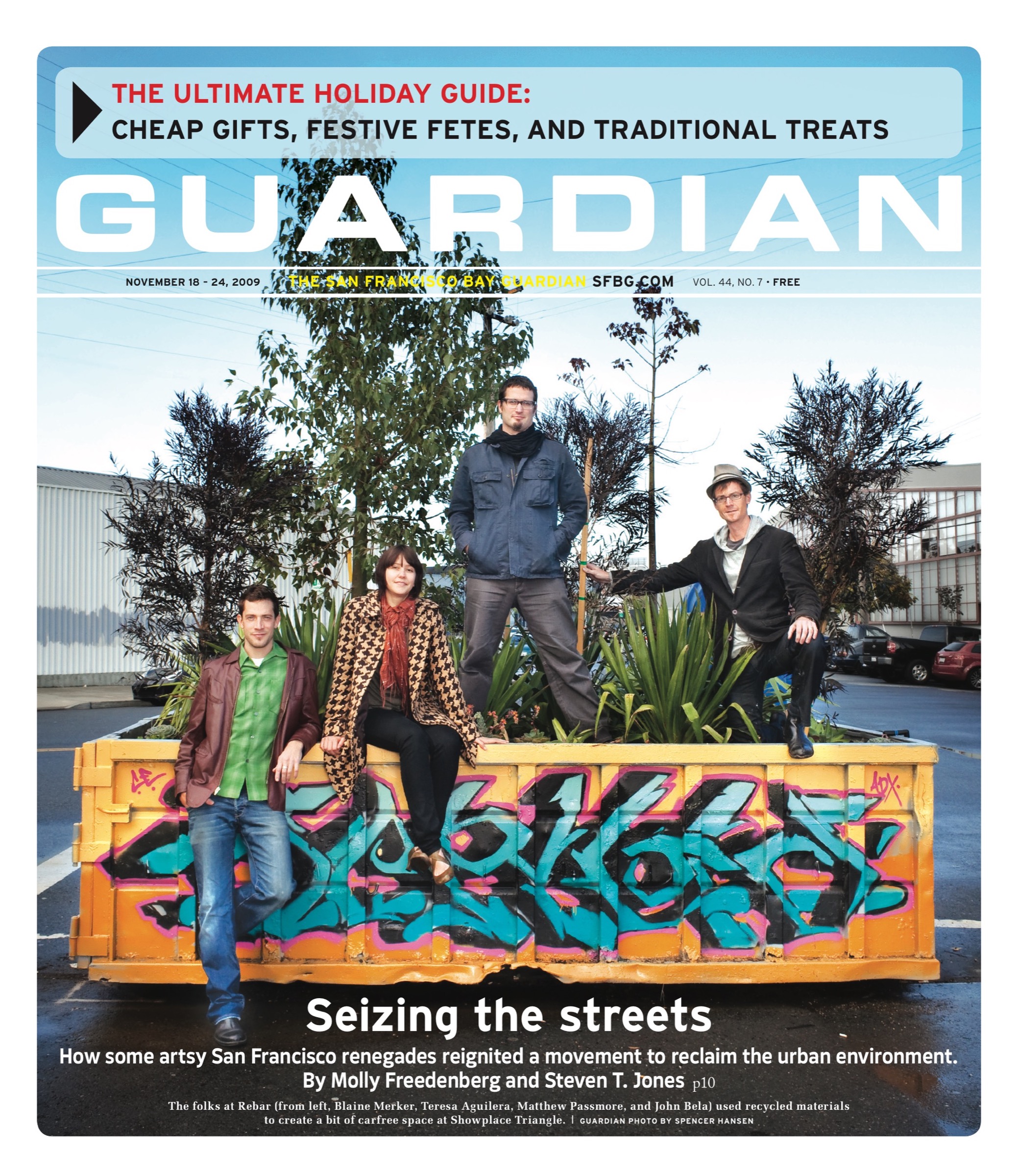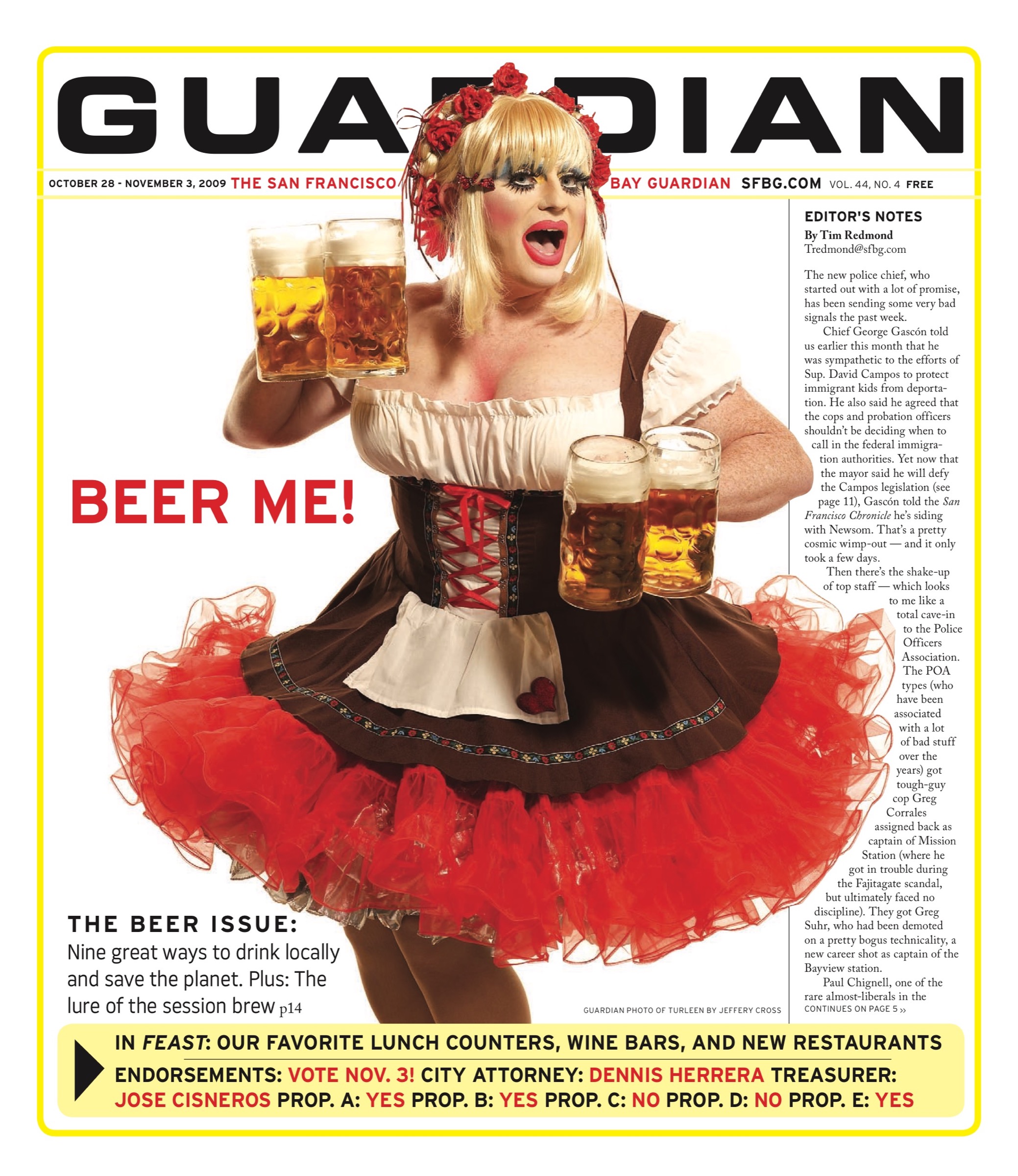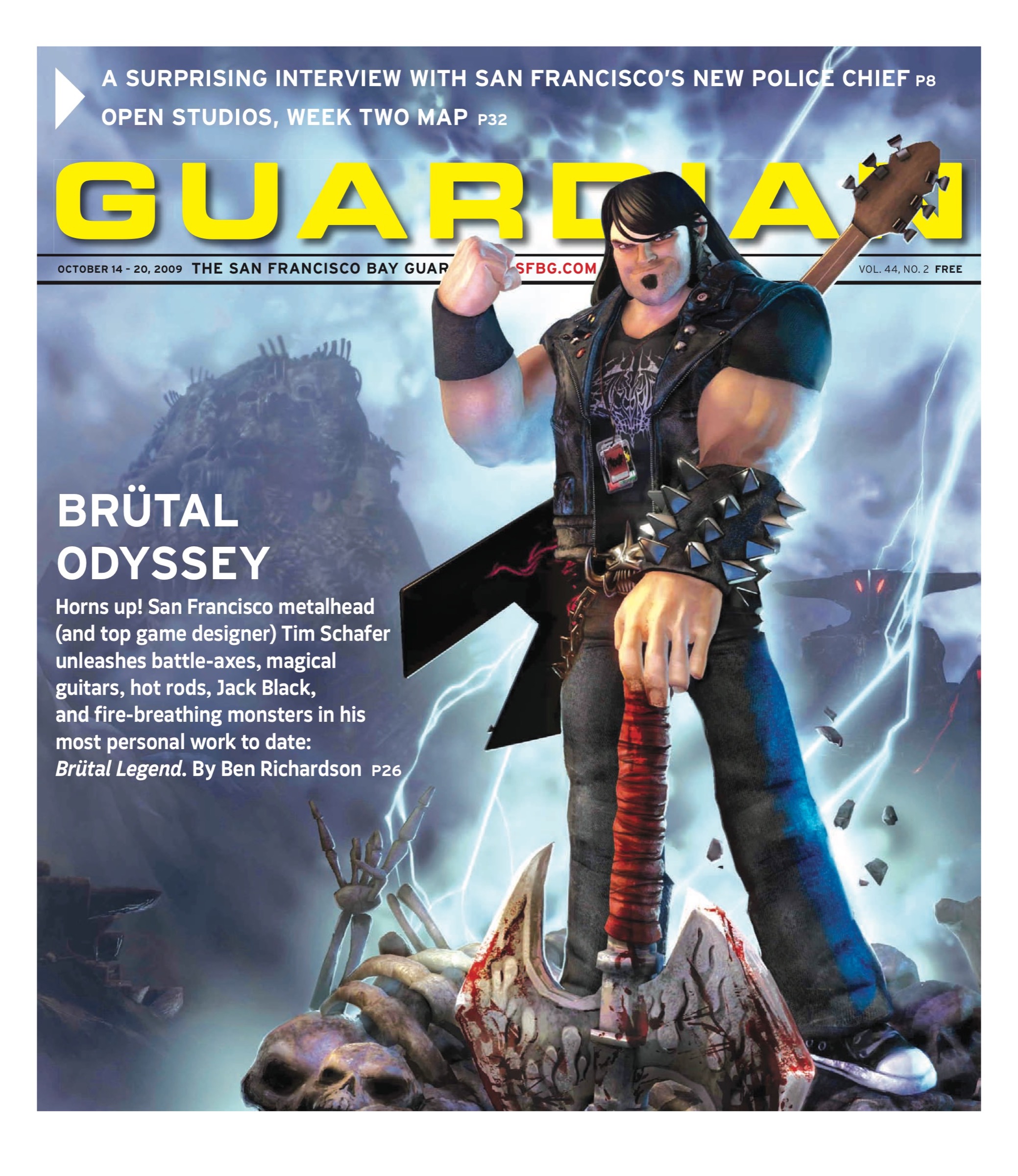>>CLICK HERE TO SEE THIS LIST ON ONE PAGE
>>BEST OF THE BAY HOME

Editors Picks: Arts and Nightlife
BEST BLOODY QUEEN
A gut-spewing zombie drag queen roller derby in honor of Evil Dead 2. An interview with The Exorcist‘s Linda Blair preceded by a rap number that includes the line, "I don’t care if they suck their mother’s cock, as long as they line up around the block!" A virtual wig-pulling catfight with Elvira, Mistress of the Dark. All this and more have graced the proscenium of the Bridge Theater as part of the jaw-dropping (literally) Midnight Mass summertime B-movie fun series, brought to us by the always perfectly horrific Peaches Christ. Her wigs alone are usually enough to scare the jellybean-bejeezus out of us, but Peaches combines live craziness with wince-worthy flicks to take everything over the top. After this, her 12th season of disembowelled joy, Peaches is moving on from Midnight Mass to become a director in her own right — she just wrapped up filming All About Evil with Natasha Lyonne and a cast of local fleshbots. Look for it in your googleplex soon, and know that Peaches still stumbles among us.
www.peacheschrist.com
BEST FLAMIN’ FUN
Kids, really, don’t try this at home. Don’t hook up your two-player Dance Dance Revolution game to a row of flamethrowers. Don’t rig said game to blast your dance competitior with a faceful of fire in front of an adoring crowd if they miss a step. Don’t invest in enough propane to fuel a small jet, a flaming movie screen for projecting all those awkward dance moves onto, and a booming sound system to play all the Japanese bubblegum techno you could ever hope to hear. Leave the setup to Interpretive Arson, whose Dance Dance Immolation game has wowed participants and spectators alike from Black Rock City to Oaktown — and will scorch Denmark’s footsies this fall. Do, however, seek out these intrepid firestarters, and don a giant silver fireproof suit with a Robby the Robot hood. Do the hippie shake to the mellifluous tones of Fatboy Slim and Smile.dk, and prepare yourself to get flamed, both figuratively and literally.
www.interpretivearson.com
BEST PENGUIN PARTY, PLANETARIUM INCLUDED
Penguins are damn funny when you’re drunk. They’re pretty entertaining animals to begin with, but after a couple martinis those little bastards bring better slapstick than Will Ferrell or Jack Black. But tipsily peeping innocent flightless birds — plus bats, butterflies, sea turtles, and manta rays — is just one of many reasons to attend Nightlife, the stunningly rebuilt California Academy of Sciences’ weekly Thursday evening affair. This outrageously popular (get there early) and ingenious party pairs gonzo lineups of internationally renowned DJs and live bands with intellectual talks by some of the world’s best-known natural scientists. Cocktails are served, the floor is packed, intellects are high — and where else can you order cosmos before visiting the planetarium? Another perk: the cost of admission, which includes most of the academy’s exhibits, is less than half the regular price, although you must be 21 or older to attend. Come for the inebriated entertainment, stay for the personal enrichment.
Thursdays, 6 p.m., $8-<\d>$10. California Academy of Sciences, 55 Music Concourse Dr., Golden Gate Park, SF. (415) 379-8000, www.calacademy.org/events/nightlife
BEST LINDY HOP TO LIL’ WAYNE
Retain a fond nostalgia for the 1990s swing revival scene? Swing Goth is the event you’ve been waiting for. Not quite swing and not even remotely goth, Swing Goth gives swing enthusiasts the go-ahead to boogie-woogie to modern tunes at El Rio. This isn’t your grandmother’s fox trot: rock, rap, ’80s, alternative, Madchester, Gypsy punk, and almost anything else gets swung. Held on the first and third Tuesday of each month and tailored for beginners, this event draws an eclectic crowd that includes dudes who call themselves "hep cats," Mission hipsters, and folks who rock unironic mom jeans and Reebok trainers. If you’re new to swing, arrive at 7:30 and take a one-hour group lesson with ringleader Brian Gardner, who orchestrates the event, to get a quick introduction to swing basics before the free dance. Lessons are $5, but no extra charge for ogling the cute dykes who call El Rio their local watering hole. Swing? Schwing!
First and third Tuesdays, 7 p.m., free. El Rio, 3158 Mission, SF. (415) 282-3325, www.swinggoth.com
BEST CELESTIAL TRAJECTORISTS
Who can take a sunburst of boomer rock inspirations — like The Notorious Byrd Brothers–<\d>era Byrds and Meddle-some Pink Floyd — sprinkle it with dew, and cover it with chocolaty nouveau-hippie-hipster blues-rock and a miracle or two? The fresh-eyed, positive-minded folks of Assemble Head in Sunburst Sound can, ’cause they mix it with love and make a world many believed had grown hack and stale taste good. Riding a wave of local ensembles with a hankering for classic rock, hard-edged Cali psych, Japanese noise, and wild-eyed film scores, the San Francisco band is the latest to make the city safe once more for musical adventurers with open minds and big ears. What’s more, the Assemble Head in Sunburst Sound’s inspired new third album, When Sweet Sleep Returned (Tee Pee) — recorded with help from Tim Green at Louder Studios — has fielded much press praise for space-traveling fuzzbox boogie blowouts like "Drunken Leaves" and blissed-out, sitar-touched jangle rambles such as "Kolob Canyon." Consider your mind burst.
www.myspace.com/theassembleheadinsunburstsound
BEST DANCE DYNAMO
You can’t miss him. He has legs like tree trunks and arm muscles that ripple like lava. When he leaps you think he’ll never come down, and his turns suggest the power of a hurricane. He is dancer Ramón Ramos Alayo, Six years ago he founded the CubaCaribe Festival that now packs in dance aficionados of all stripes, and he’s one of the shaping forces behind the wild San Francisco Carnaval celebration. He runs Alayo Dance Company, for which he choreographs contemporary works with Afro-Cuban roots, and he teaches all over the Bay Area — as many as 60 people show up for his Friday salsa classes at Dance Mission Theater. But Ramos is most strikingly unique as a performer. Ramos is as comfortable embodying Oshoshi, the forest hunter in the Yoruba mythology, as he is taking on "Grace Notes," a jazz improvisation with bassist Jeff Chambers. No wonder Bay Area choreographers as radically different as Joanna Haigood, Sara Shelton Mann, and Robert Moses have wanted to work with him.
www.cubacaribe.org
BEST BLUEGRASS AMNESIAC
Toshio Hirano packs a mean sucker punch. At first glance he’s a wonderfully eccentric Bay Area novelty, a yodeling Japanese cowboy playing native songs of the American heartland. Yet upon further inspection, it becomes as clear as the skies of Kentucky that Toshio is the real deal when it comes to getting deep into the Mississippi muck of Jimmie Rodgers-<\d>style bluegrass. Enchanted by the sound of American folk music as a Japanese college student, Toshio soon ventured stateside to spend years traveling and playing from Georgia to Nashville to Austin before finally settling in the Bay Area. Today, Toshio plays once a month at Amnesia’s free Bluegrass Mondays to standing-room-only crowds. Stay awhile to hear him play Hank Williams’s "Ramblin’ Man" or Rodgers’s "Blue Yodel No. 1(T for Texas)." It’ll clear that Toshio’s novelty is merely a hook — his true appeal lies in his ability to show that there’s a cowboy lurking inside all of us.
www.toshiohirano.com
BEST COMMUNITY CHOREOGRAPHERS
A collective howl went up in 1995 when it was announced that the annual festival Black Choreographers: Moving into the 21st Century at Theater Artaud was ending due in part to lack of funding. But two East Bay dancers, Laura Elaine Ellis and Kendra Kimbrough Barnes, actually did something about it, working to ensure that African-American dancers and dance-makers received attention for the range and spirit of their work. It took 10 years, but in 2005, Ellis and Kimbrough Barnes helped launch Black Choreographers Festival: Here and Now, which takes place every February in San Francisco and Oakland. The three-week event is a fabulous way for a community to celebrate itself and to invite everyone to the party. While the choreographers’ range of talent and imagination has been impressive — and getting better every year — the performances are merely the icing on the cake. Master classes, mentoring opportunites for emerging artists, and a technical theater-training program for local high school and college students are building a dance infrastructure the next generation can plug into.
www.bcfhereandnow.com
BEST MADCAP POP MAIDENS
San Francisco can always use another all-female band — and Grass Widow satisfies that need beautifully, cackling with brisk, madcap rhythms and rolling out a happy, crazy quilt of dissonant wails. Drummer-vocalist Lillian Maring, guitarist-vocalist Raven Mahon, and bassist-vocalist Hannah Lew are punk as fuck, of course — in the classic, pre-pre-packaged noncodified mode — though many will instead compare the trio’s inspired, decentered pop to dyed-in-the-bluestockings lo-fi riot grrrl. Still, there’s a highly conscious intensity to Grass Widow’s questioning of the digital givens that dominate life in the late ’00s, as they sing wistfully then rage raggedly amid accelerating rhythms and a roughly tumbling guitar line on "Green Screen," from their self-titled debut on Make a Mess: "Flying low into trees. We exist on the screen. Computer can you hear me? Understand more than 1s and 0s?" Grass Widow may sweetly entreat the listener, "Don’t make a scene," but if we’re lucky, these ladies will kick off a new generation of estrogen-enhanced music-making.
www.myspace.com/grasswidowmusic
BEST PURPLE SING-ALONG
Karaoke is one of those silly-but-fun nightlife activities that always has the potential to be awesome but usually isn’t. The song lists at most karaoke bars suck, the sound systems are underwhelming, and no matter where you go there’s always some asshole bumming everyone out with painful renditions of Neil Diamond tearjerkers. Well, not anymore! Steve Hays, a.k.a. DJ Purple, is a karaoke DJ — or KJ — who has single-handedly turned the Bay Area’s once tired sing-along scene into a mother funkin’ party y’all. DJ Purple’s Karaoke Dance Party happens every Thursday night at Jack’s Club. Forget the sloppy drunks half-assing their way through Aerosmith and Beyoncé songs. DJ Purple’s Karaoke Dance Party is all about Iron Maiden, Snoop Dogg, Led Zeppelin, and Riskay. No slow songs allowed. An actual experienced DJ, Hays keeps the beats running smooth, fading and blending as each person stumbles onstage, and even stepping in for saxophone solos and backup vocals when a song calls for it. And sometimes even when it doesn’t.
Thursdays, 9 p.m., free. Jack’s Club, 2545 24th St., SF. (415) 641-5371, www.djpurple.com
BEST FLANNEL REVIVAL
In this age of continual retro, it comes as a surprise that listening to mainstream ’90s alternative rock can give you, under the right inebriated circumstances, the kind of pleasure not experienced since heroin went out of vogue. Debaser at the Knockout has become one of the best monthly parties in San Francisco, largely because it gives ’80s babies, who were stuck playing Oregon Trail in computer class while Courtney Love and Kat Bjelland were rocking it out in Portland, the chance to live out their Nirvana-era dreams. Debaser promoter Jamie Jams is the only DJ in San Francisco who will spin the Cranberries after a Pavement song, and his inspired mixology is empirically proven to induce moshing en masse until last call, an enticingly dangerous sport now that lead-footed Doc Martens are back in style. Sporting flannel gets you comped, so for those still hung up over Jordan Catalano and the way he leans, Debaser is rife with contemporary, albeit less angsty, equivalents.
First Saturdays, 9 p.m., Knockout, 3223 Mission, SF. (415) 550-6994, www.myspace.com/debaser90s
BEST CRANIUM MONOPOLY SCRABBLE RISK
The shaky economy’s probably put your $60 concert plans on hold and relegated those high-rolling VIP nights to the back burner. So it’s a great time to return to the simpler forms of social interaction, such as shaking some dice and screaming, "Yahtzee, bitches!" or guffawing maniacally every time some poor fool attempts to pass your two hotels on Boardwalk. Fortunately, game night at On the Corner café on Divisadero fills your staid Wednesday evenings with enough card-shuffling, Pop-o-matic popping, I-want-to-be-the-thimble classics to sink your battleship blues. Plus, there’s coffee and beer. Working in collusion with the colossal collection of neighboring Gamescape, On the Corner provides a plethora of gaming options to fit its large tables and vibrant atmosphere. Stratego, Scattergories, and other trivial pursuits are all available, and the 7 p.m.-<\d>to-<\d>closing happy hour includes $2.50 draft beers and sangria specials. The tables fill up quickly, though — arrive early so you won’t be sorry.
Wednesdays, 7–10 p.m., free. 359 Divisadero, SF. (415) 522-1101, www.sfcorner.com
BEST PARTY OF ONE
Perfect moments are never the ones you work hard to create. Too much effort kills the magic. Instead, the moments we treasure are those that steal up on us, slipping past our defenses to reveal, for just an instant, the sublime wonder of the universe. This is precisely what happens during one’s first encounter with the Lexington Street disco ball, innocuously spinning its multifaceted heart out on a quiet neighborly block in the heart of the Mission District. One moment you’re just walking down the street minding your own business — perhaps rehashing the "should have saids" or the "could have beens" in the muddled disquiet of your mind — when suddenly you spot it, the incongruously located disco ball suspended from a low-hanging branch, throwing a carpet of stars across the sidewalk for anyone to enjoy. All is still, but the music in your heart will lead you. Hold your hands in the air, walk into the light, and dance.
Lexington between 20th and 21st streets, SF
BEST BLOCK-ROCKIN’ BIKE
Amandeep Jawa’s bright blue, sound-rigged party-cycle — Trikeasaurus — is our bestest Critical Mass compadre and bike lane buddy, and an essential component of his impromptu FlashDance parties. This three-wheelin’, free-wheelin’, pedal-and-battery-powered funk machine has been bringing the party to the people — and leading spontaneous Michael Jackson tributes — from the Embarcadero to the Broadway tunnel for the past two years. Even if you’re just out for a stroll or a bit of that ephemeral San Francisco "sun"-bathing, when Trikeasaurus comes rolling along you just have to boogie on down the road, bust a move, get your groove thing on, let your freak flag fly, and insert ecstatic cliché here. We can pretend all we want in the privacy of our own hip sancta sanctorum that Destiny’s Child or OutKast will never move us, but somehow when Trikeasaurus comes bumping by, we just can’t help but bump right back. Don’t fight the feeling! Join the 500-watt, 150-decibel velolution today.
www.deeptrouble.com
BEST HOLES FOR YOUR KRAUTROCK SOUL
If you’ve done ketamine, you know what it’s like to get lost in the cosmic K-hole. To those who have entered the mystical D-hole, however, your ketamine story is child’s play. The Donuts dance party, thrown at various times and locations throughout the year by DJ Pickpocket and visual artist AC, provides adventurous club-goers with that most delicious of drugs: donuts, given away free. First timers, be careful: these potent little sugar bombs are highly addictive and can often lead to an all-night binge of ecstatic power-boogie, which can result in terrible withdrawal symptoms. Like many other popular club drugs, donuts are offered in powdered form, though they can also be glazed, which leaves no tell-tale residue around the mouth. But as long as you indulge responsibly, entering the Hole of the Donut is perfectly safe. Amp up your experience to fever-pitch perfection with Donuts’ pulse-pumping Krautrock, new wave, retro disco, and dance punk live acts and beats.
www.myspace.com/donutparty
BEST PLACE TO PARTY LIKE A SLOVENIAN
If there’s one thing all Slovenians have in common, it’s that they know how to deck a muthafunkin’ hall, y’all. It stands to reason then that Slovenians run one of the biggest and best halls in town. The Slovenian Hall in Potrero Hill is available for all your partying needs — birthdays, anniversary bashes, coming-out fests, etc. The rooms inside the hall are spacious and clean, the kitchen and bar spaces are outfitted to serve an entire army, and there are plenty of tables and chairs. But it’s the decor that makes this place unique: Soviet-era and vintage tourism advertisements are sprinkled throughout the place and banners promoting Slovenian pride hang from the ceiling. The hall also hosts live music events — recently an Argentine tango troupe took up residence there, making things border-fuzzingly interesting, to say the least.
2101 Mariposa, SF. (415) 864-9629
BEST FUTURE RAP CEO
Odds are you’ve not yet heard of East Bay teen hip-hop talent Yung Nittlz — but one day soon you will. The ambitious, gifted Berkeley High student has already amassed five albums worth of smooth and funky material that he wrote, produced, and rapped and sang on. In August 2007, when he was just 13, the rapper born Nyles Roberson scored media attention when Showtime at the Apollo auditions came to town and he was spotted very first in line, having camped out the night before. And while Yung Nittlz wasn’t among the lucky final few to be picked, he did make a lasting impression on the judges with his strong performance of the song "Money in the Air" and choreography that included him strategically tossing custom-made promo dollars that he designed and made. The gifted artist also designed the professional-looking cover for his latest demo CD, which suggests fans should request the hit-sounding "Feelin’ U" on KMEL 106 FM. Stay tuned. You’ll likely be hearing it soon.
www.myspace.com/yungnittlz
BEST B-MOVIE SURVIVOR
The crappy economy has ruined many things. It’s the reason both the Parkway and the Cerrito Speakeasy theaters — where you could openly drink a beer you’d actually purchased at the concession stand, not smuggled in under your sweatshirt — closed their doors this year. But even a bummer cash crunch can’t dampen a true cult movie fan’s love of all things B. Deprived of a permanent venue for his long-running "Thrillville," programmer and host Will "The Thrill" Viharo adjusted his fez, brushed off his velvet lapels, and started booking his popular film ‘n’ cabaret extravaganzas at other Bay Area movie houses, including the 4-Star and the Balboa in San Francisco, and San Jose’s Camera 3. Fear not, devotees of film noir, tiki culture, the swingin’ ’60s, big-haired babes, Aztec mummies, William Shatner, the Rat Pack, Elvis, creature features, Japanese monsters, and zombies — the Thrill ain’t never gonna be gone.
www.thrillville.net
BEST GAY FLIPPER ACTION
Much like travel agents, beepers, and modesty, pinball machines are slowly becoming relics of the past. But it’s difficult to understand why these quarter-fed games would fall by the wayside, since they’re especially fun in a bar atmosphere. What else is there to do besides stare at your drink, hopelessly chat up the bartender, constantly check your phone, and try to catch that one cute patron’s eye. At the Castro’s Moby Dick, pinball saves you from such doldrums. Sure, the place has the requisite video screens blaring Snap! and Cathy Dennis chestnuts, and plenty of hunky drunkies to serve as distractions. But its quarter-action collection — unfortunately whittled down to three machines, ever since Theater of Magic was retired due to the difficulty of finding replacement parts — is a delightful retro rarity in this gay day and age. So tilt not, World Cup Soccer, Addams Family, and Attack from Mars fans. There’s still a queer home for your lightning-quick flipping.
4049 18th St., SF. www.mobydicksf.com
BEST BLAST OF JUSTICE
Founded in 2002, the many-membered Brass Liberation Orchestra has been blowing their horns for social justice all over the Bay Area — from the San Francisco May Day March and Oakland rallies for Oscar Grant, to protests against city budget cuts and jam sessions at the 16th Street BART station. Trombones out and bass drums at the ready, this tight-knit organization of funky folk recently returned from New Orleans, where they played to support community rebuilding projects in the Lower Ninth Ward. With a membership as diverse as they come, the BLO toots their horns specifically to "support political causes with particular emphasis on peace, and racial and social justice" — especially concerning immigrants’ rights and anti-gentrification issues. But the most joyful part of their practice is the spontaneous street parties they engender wherever they pop up, and their seemingly impromptu romps through neighborhoods and street festivals. Viva la tuba-lution!
www.brassliberation.org
BEST WITTY WONG
Is your idea of hell being trapped in a room with a white, collegiate, spoken-word "artist" — or worse yet, being forced to wear an Ed Hardy t-shirt? Are you a veteran of the 30 Stockton and the 38 Geary, with the wounds and the stories to prove it? Can you just not help but stare at someone who somehow can’t resist an act of street corner masturbation? Then you’re ready to lend an ear to Ali Wong, the funniest comedian to stomp onto a San Francisco stage in a long time. Some people get offended by Wong, which is one reason she’s funny — comedy isn’t about making friends, and she’s not sentimental. She draws on her family history and writing and performing experience in implicit rather than overt ways while remaining as blunt as your funniest friend on a bender.
www.aliwong.com
BEST SITE FOR SHUTTERBUGS
Take a picture, it’ll last longer. Especially if you take it to — or even at — RayKo Photo Center, a large SoMA space that boasts a studio, a shop stocked with new and used cameras, a variety of black-and-white and color darkrooms, a digital imaging lab (with discount last-Friday-of-the-month nighttime hours), and classes where one can learn the latest digital skills as well as older and arcane processes such as Ambrotype (glass plate) and Tintype (metal plate) image-making. Devoted in part to local photographers, RayKo’s gallery has showcased Bill Daniel’s panoramic yet raw shots of a post-Katrina Louisiana and has likely influenced a new generation of shutterbugs affiliated with groups and sites like Cutter Photozine and Photo Epicenter. One of its coolest and truly one-of-a-kind features is the Art*O*Mat Vending Machine, an old ciggie vendor converted into a $5-a-piece art dispenser. And of course RayKo has an old photo booth, so you can take some quick candid snapshots with or without a honey.
428 Third St., SF. (415) 495-3773, www.raykophoto.com
BEST RAPPING CABBIE
The great myth about cab drivers is that they’re a bunch of underappreciated geniuses who write poetry and paint masterpieces when they’re not busy shuttling drunks around. Most cabbies, however, aren’t Picassos with pine-scent air fresheners. They clock in and out just like we all do, and then they go home and watch reality TV. There are, however, a few exceptions to the rule: true artists who have deliberately chosen the cabbie lifestyle because it allows them the freedom to pursue their passions on the side. MC Mars is such a cabbie. A 20-year veteran on the taxi scene, Mars is also a hip-hop performer, a published author, and an HIV activist. You can check his flow every Wednesday night at the Royale’s open-mic sessions. Or, if you’re lucky enough to hail his DeSoto, you can get a free backseat show on weekends. And don’t forget to pick up his latest CD, "Letz Cabalaborate," available on Mars’ Web site.
www.mcmars.net
BEST FRESH POETICS
The Bay Area knows poetry. And people in the Bay Area who know poetry today realize that the San Francisco Renaissance, the Beats, the Language poets, and even the New Brutalists might inspire contemporary writers, but they don’t own them. You can encounter proof in places like Books and Bookshelves, and read it in publications like Try. As the Bay Area Poetics anthology edited by Stephanie Young made clear in 2006, Bay Area verse is enormous and ever-changing. One year earlier, David Larsen established a space for it in Oakland with his New Yipes Reading Series, which frequently paired poets with filmmakers. He’s since moved to the East Coast, but Ali Warren and Brandon Brown re-energized the concept, simplifying its name to The New Reading Series and refining its content to readings with musical interludes. It’s the best place around to hear Tan Lin and Ariana Reines and confront notions of the self through Heath Ledger. It’s also hosted a kissing booth, for all you wordsmiths who aren’t above romantic trappings.
416 25th St., Oakl. www.newyipes.blogspot.com
BEST HOUSE OUTSIDE
For 15 years, the much-loved and lovable warm weather Sunset parties have shaken various hills, isles, parks, patios, and boats with funky, techy house sounds. Launched by underground hero DJ Galen in 1994, the outdoor Sunset gigs have amassed a huge following of excited party newbies and familiar old-school ravers — and now even their kids. Early on in the game, Galen was soon joined by fellow Bay favorite DJs Solar and J-Bird, and the three — collectively known as Pacific Sound — have kept the vibe strong ever since. This year saw a remarkable expansion on the Sunset fan base: attendance at the season opener at Stafford Lake reached almost 4,000, and Pacific Sound just launched an annual — and truly moving — party on Treasure Island that had multiple generations putting their hands in the air. The recent Sunset Campout in Belden drew hundreds for an all-weekend romp with some of the biggest names in electronic music — true fresh air freshness.
www.pacificsound.net
BEST SECRET OF ETERNAL RAVE
According to murky local legend, sometime in the early ’90s a Finnish archaeologist named Mr. Floppy passed through Oakland on a quest to find an inverted pyramid rumored to hold the secret to eternal life. He didn’t find anything like that, of course, but he did discover a really cool apartment complex run by an obsessive builder named George Rowan. The sprawling place, which housed multiple dwelling units as well as an outdoor dance area and an out-of-use bordello and saloon famously frequented by Jack London in the 1800s, was an interconnected maze of rooms decorated with found objects and outsider art. It was a perfect spot to throw underground raves, which is exactly what Floppy and Rowan did until the day they got slapped with a fire-hazard citation. Nobody really knows what happened to the psychedelic archaeologist after that, although his spirit lives on: Mr. Floppy’s Flophouse has recently re-opened as a venue for noise shows, freaky circuses, and all-night moonlit orgies.
1247 E. 12th St., Oakl
———–
BEST OF THE BAY 2009:
>>BEST OF THE BAY HOME
>>READERS POLL WINNERS
>>EDITORS PICKS: CLASSICS
>>EDITORS PICKS: CITY LIVING
>>EDITORS PICKS: FOOD AND DRINK
>>EDITORS PICKS: ARTS AND NIGHTLIFE
>>EDITORS PICKS: SHOPPING
>>EDITORS PICKS: SEX AND ROMANCE
>>EDITORS PICKS: OUTDOORS AND SPORTS
>>LOCAL HEROES


